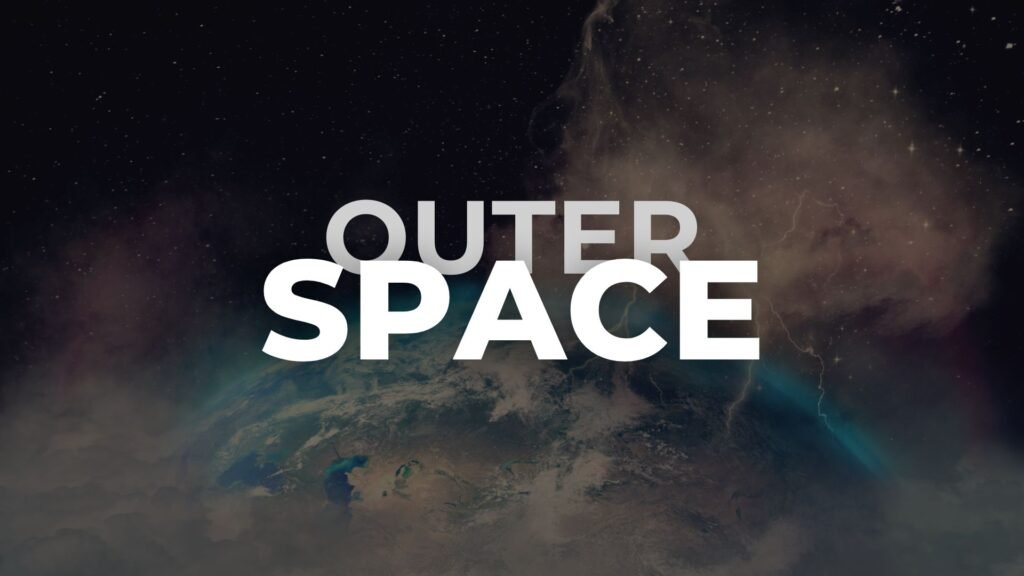
In our increasingly digital and interconnected world, staying connected is no longer a luxury — it’s a necessity. Whether it's through smartphones, GPS systems, or satellite communication, the invisible threads that tie our modern lives together rely heavily on signals from space. But there's a little-known disruptor floating far beyond our skies: space weather.
While we usually associate weather with wind, rain, or heat waves, space weather is something entirely different — and it can have serious impacts on how Earth’s communication systems function. This blog explores how space weather changes Earth’s communication systems, the science behind these disruptions, and the efforts being made to mitigate their impact.
What is Space Weather?

Space weather refers to the environmental conditions in space influenced by the Sun. Solar flares, coronal mass ejections (CMEs), and geomagnetic storms are the main drivers. These events release huge amounts of energy and charged particles into space, some of which reach Earth and disturb our magnetic field and upper atmosphere.
The ionosphere, a layer of Earth’s upper atmosphere, is particularly sensitive to these solar activities. Since many communication systems (including shortwave radio and satellite signals) rely on bouncing or transmitting signals through this layer, any disturbance can cause signal degradation, delays, or even complete blackouts.
How Space Weather Affects Communication
Let’s break this down into the specific ways space weather affects Earth’s communication infrastructure.

1. Satellite Communication Disruptions
Satellites orbiting Earth are exposed to the harsh environment of space. During solar flares or geomagnetic storms, high-energy particles can damage satellite electronics, interfere with onboard sensors, or disrupt the transmission of data.
Key Impacts:
Loss of GPS accuracy
Interruption in TV broadcasts
Satellite phone outages
Reduced signal strength
The solar flares' impact on satellites can even cause long-term degradation, reducing satellite lifespan or forcing mission aborts.
2. Radio Signal Interference

High-frequency (HF) radio signals, often used for aviation, maritime, and military communication, travel by bouncing off the ionosphere. When space weather events disturb this layer, radio signals may scatter, weaken, or get lost entirely.
This can be particularly dangerous in remote areas, where satellite or HF radio is the only method of communication.
3. Power Grid and Ground-Based Systems
While not directly related to communication, geomagnetic storms can induce electrical currents in power grids, damaging transformers and causing blackouts. This can, in turn, affect ground-based communication infrastructure like data centers and internet providers.
For instance, during the 1989 Quebec blackout, millions were left without electricity for 9 hours due to a geomagnetic storm, indirectly halting all forms of electronic communication.
Case Study: Space Weather Effects in North America
North America has experienced several significant space weather events. Due to its high-latitude location, it's more vulnerable to geomagnetic disturbances.
One major example occurred in 2003 during the Halloween Storms, where solar activity knocked out satellites, disrupted GPS signals, and caused aviation rerouting across the US and Canada. This emphasized the importance of real-time NASA space weather monitoring and NOAA space weather data in warning and preparing stakeholders.
Monitoring and Mitigation Strategies
Thanks to increased awareness, both governmental agencies and private companies have taken major steps to track, forecast, and prepare for space weather disruptions.
NASA and NOAA Initiatives
NASA's space weather monitoring systems, such as the Solar Dynamics Observatory (SDO), constantly observe solar activity.
NOAA space weather data is made publicly available, providing timely alerts for industries reliant on space-based technology.
Satellite Shielding and Design
Modern satellites are built with radiation-hardened components and shielding to protect against solar events. Redundancy systems also help minimize the impact of short-term interference.
Investing in Protection Tools
Many industries now buy satellite communication protection equipment, such as ground-based filters, signal boosters, and hardened electronics. This helps ensure reliable communication, even during mild disturbances.
Why This Matters More Than Ever
In an age of global digital dependency, even a few hours of communication downtime can have ripple effects:
Airlines may lose contact with aircraft mid-flight.
Maritime navigation can be thrown off course.
Emergency services may lose communication lines in disasters.
Banking systems, which rely on precise GPS timing, can fail.
As our world grows more connected, understanding how space weather changes communication systems is not just a scientific curiosity — it’s a global necessity.
Future Proofing Against Solar Storms
As we approach the Solar Maximum expected around 2025, scientists warn of an increased risk of intense space weather events. These solar activities, such as flares and geomagnetic storms, could severely disrupt global communication systems, including satellites, GPS, and radio networks. The potential impact makes it crucial to take preventive measures before these disruptions become a reality.
To stay ahead, we need to invest in more robust space weather forecasting tools that provide early warnings. Enhancing international data-sharing protocols will allow faster and more coordinated responses. Additionally, building backup communication networks and system redundancies can help maintain connectivity even when primary channels fail. Proactive planning today ensures our digital infrastructure remains strong and secure in the face of tomorrow’s solar storms.
Conclusion:
While space weather may not make headlines every day, its influence on Earth’s communication systems is profound and ongoing. From disrupting satellite signals to interfering with radio communication, these invisible storms from the Sun remind us that our technologies are not immune to nature’s forces. Agencies like NASA and NOAA play a vital role in monitoring and predicting space weather events.
As we move toward a more space-integrated future, being aware of how space weather affects communication systems on Earth is crucial. Let’s build not just faster and smarter communication systems, but ones that are ready for the challenges of space. Are you in a field that depends on satellite or high-frequency communication? Start by being updated with NASA space weather monitoring reports and exploring NOAA space weather data tools to assess your risk.







